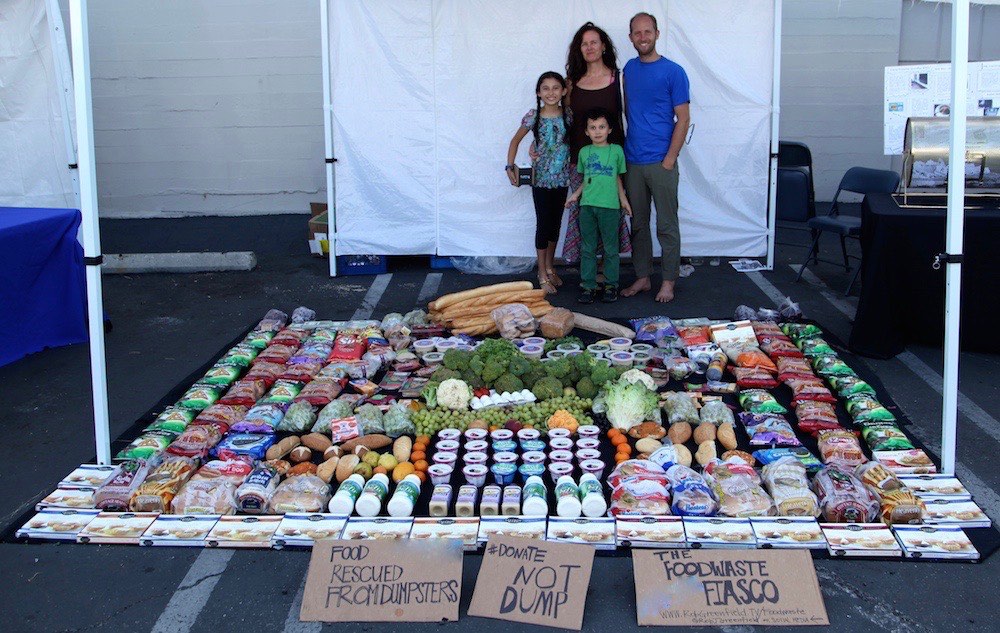Key Messages
The primary aim of the documentary is to show the amount of food we waste in the United States with a focus on super markets and the food they don’t sell. Jeremey Seifert, the director and person that is followed throughout the film, dumpster dives in the trash of supermarkets for nearly all his food for himself and his family. He consistently finds food that has not been spoiled and is thrown out because of small flaws that they deem to be unfit to sell or consume. For example, while dumpster diving they found a carton of eggs that had 11 eggs in it. This was most likely due to one of the eggs cracking. Seifert’s problem with this was that there were still 11 good eggs that “had” to be thrown out because of one mishap. This is just one example of many to show how wasteful American’s can be with food.
Promoted Ideologies
This film was trying to show the wastefulness that goes on in America in order to promote conserving more the food that is thrown away so it is able to feed the people who actually need it. In the beginning of the film, statistics is given to the view that “every year in America we throw away 96 billion pounds of food”(00:17). That is then broken down into 3,000 pounds of food and thrown out per second. In another part of the film, Seifert does the math to find out how much food is thrown away in LA County. However, to display the numbers and math, he does it all with a whipped cream can in his driveway. Using the whipped cream is supposed to represent the unnecessary waste we create for the strangest reasons.
Key Storylines
One key storyline in this film is that American’s waste an incredible amount of food, and the wasted food would be enough to free all American’s from food insecurity. In the film there is a slide that states “One in seven households in the U.S. are living with hunger or are at risk for hunger”(22:09). This is an astonishing statistic, because as one of the wealthiest countries in the world, one would think that few people should have to suffer from hunger. This is especially frustrating when you consider that “The United States has the greatest food surplus of any nation, with 200 percent of the energy requirements for the population”(22:16). Another key storyline in this film is that while food is available in the United States, there are not nearly enough people helping to distribute the excess that is otherwise wasted. He talks about how transporting foods poses logistical problems, but the movie shows his son loading loaves of bread into his toy car. He explains that if more people would take some initiative, and help make use of the otherwise wasted food, considerably less people would be hungry.

(Greenfield, 2015)
Links to Class Content
This film provides a look at the food habits of our country, something that our culture has changed from valuing nearly all food, to being extremely wasteful. The movie states “We weren’t always like this, there was a time where we viewed food as something precious”(40:25). Then, Jeremy Siefert goes on to describe how the generations before us were taught never to waste food by showing propaganda from the World Wars, and footage from the Great Depression. Which goes to show that in American culture only a few decades ago, we never would have wasted food on the scale we do now. However, our culture has changed to one of excess and convenience, so much more food is being wasted.
Personal Opinions
Kyle
In my opinion, the film has definitely done the purpose it was intended to do. It’s ability to pull on the viewers’ emotions causes them to think introspectively about what they could do in order to help prevent the issue of food waste. The most impactful to me was when Jeremy Siefert described the mud cakes children in Haiti have to eat. I cannot imagine eating something made of “Dirt, salt, vegetable shortening, and dirty water”(25:50) which led me to want to do something to try to solve the problem of hunger around the world. The only weakness with the film in my opinion is that some of the information may be slightly outdated, since it was made in 2010.
Evan:
I thought the film was very interesting. Normally there is a very poor stigma around dumpster diving because of the fact that it can be dirty and gross. However, this film is much more than people going into the dumpster scrounging for food. Dumpster diving is just a way to show the food waste America produces. When watching this film, it seems low budget as the quality isn’t that great and it felt like he was making on a phone or low grade camera. However, for me, this was an impactful part because it shows that normal everyday people can wake up and choose activism to not only change their life but other people’s lives as well.
References:
Greenfield, R. (2015, June 22). Dumpster Diving in Los Angeles! [Photograph].
Greenfield, R. (2015, June 22). Los Angeles Food Waste Fiasco Rob Greenfield [Photograph].
Where’s Your Food Going. (2021, March 24). [Graph]. Augstana College. https://www.augustana.edu/student-life/groups/campus-kitchen/campus-kitchen-at-augustana
Seifert, J. (Producer), & Seifert, J. (Director). (2009). Dive [Motion Picture].United States: Compeller Pictures.